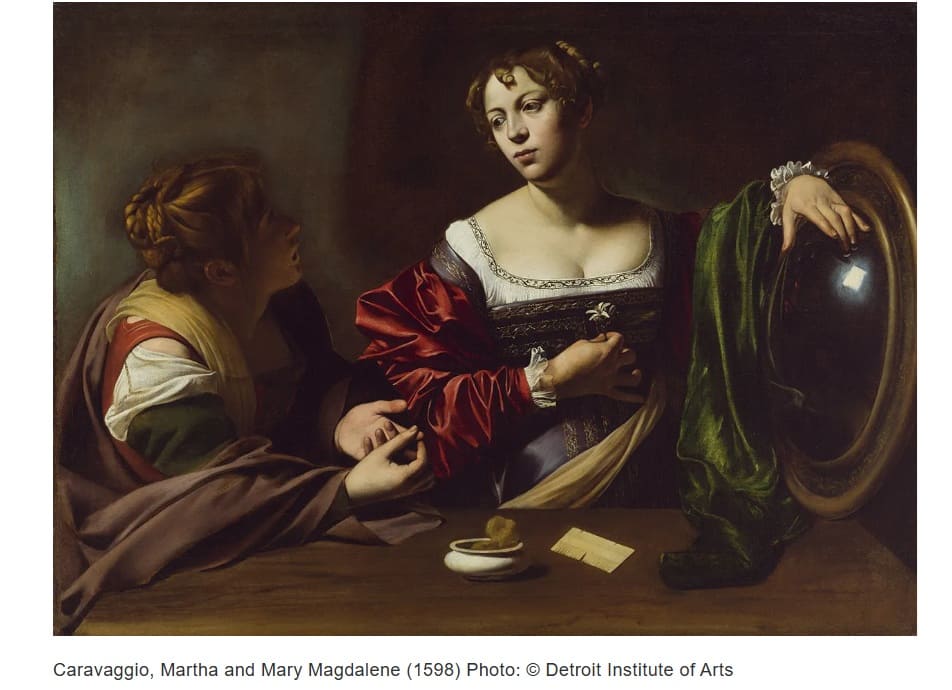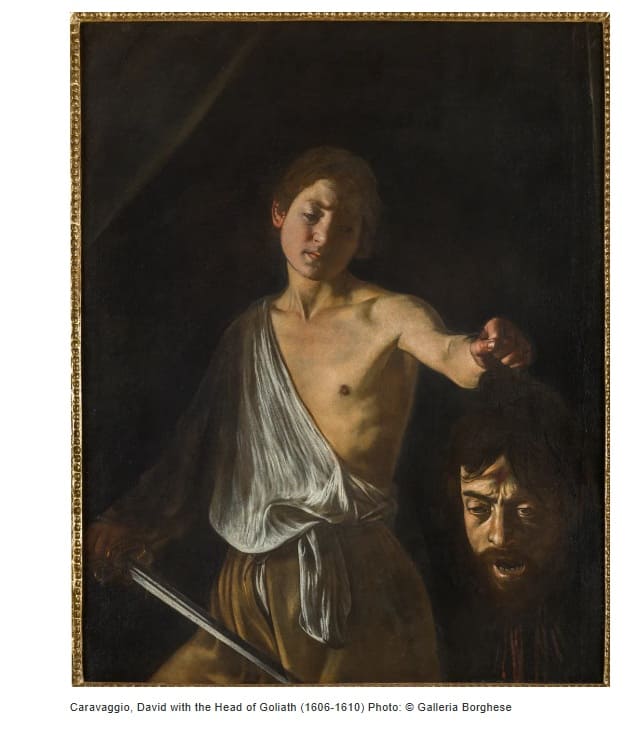


A large gathering of Caravaggios from around the world! A review of the retrospective of the great artist who lived a turbulent life
1)
A retrospective of Caravaggio's work, "Caravaggio 2025," is being held at Palazzo Barberini in Rome. The exhibition combines 24 works by the genius painter, who lived a turbulent life.
These include a portrait described as "the only Caravaggio that has never been seen before" and works depicting the tension between beauty and violence, the sacred and the secular.
2)
It hasn't been long since Caravaggio was called an Old Master. At the end of the 16th century, he was considered "the greatest painter in Rome," but his popularity waned several decades after his death.
1660 French painter Nicolas Poussin criticised him, saying, "Caravaggio was born to destroy painting."
After the end of World War II, Italian art historian Roberto Longhi reevaluated him, and he was once again brought to our attention. Since then, we have been fascinated by his work.
3)
The retrospective "Caravaggio 2025" (until July 6th) at the National Gallery of Classical Art (Palazzo Barberini) in Rome is exhibiting 24 carefully selected works from the approximately 60 existing works by Caravaggio.
These works were created from around 1595, when he began his artistic career in Rome, to 1610, when he died at 38.
Of particular note are works such as "Ecce Homo" (c. 1606-1607), which was mistakenly almost sold at a low price at an auction in Spain in 2021.
The portrait of Maffeo Barberini, which is thought to have been painted by Caravaggio around 1595, shows that the catalogue of Caravaggio's works continues to expand as Caravaggio is reevaluated.
With the addition of 14 works in churches and museums and the ceiling painting on display at Villa Boncompagni Ludovisi, you can see about two-thirds of Caravaggio's works in just one visit to Rome.
4)
A collection of works strongly reflecting his private life:
Caravaggio is as much about his scandalous life as he is about his work. Michelangelo Merisi (his real name before he was named after the nobleman his father served) was as famous for his bad behaviour as he was for his paintings.
He was arrested for carrying a sword without permission and throwing a plate of artichokes at a server (presumably with an insult).
5)
Caravaggio was later sentenced to death for killing a tennis player over a dispute over the payment of a bet, which ultimately led to his leaving Rome.
After fleeing Rome, he was given protection by the noble Colonna family, who lived in Naples, outside the city's jurisdiction, and was later accepted as a knight in the Order of Malta.
Caravaggio then fled to Sicily with the help of a friend, then returned to Naples via Malta, where an assailant attacked him in an inn and his face was disfigured "beyond recognition." He then contracted malaria and died alone on his way back to Rome.
6)
Few artists have skillfully included themselves in their works, but Caravaggio's turbulent life is reflected in his work.
For example, in his David with the Head of Goliath (c. 1606), which was painted while he was seeking pardon for the murder that led him to leave Rome, he replaces Goliath's head with his face.
This depiction proves that Caravaggio is offering himself and his work to the viewer and gives the impression that he had a premonition of his oragic fate.
7)
On the other hand, Caravaggio's method of painting has become fresher with every passing year. While depicting human figures' strong and unique presence, Caravaggio created a world of pure expression that acts as a mirror reflecting reality. Narcissus (1597-1598), displayed at the beginning of the exhibition, is a good example of this.
His paintings are technically highly sophisticated and attractive, but they are also disturbing and pose more questions to the viewer.
At the time, when Mannerism was flourishing in Rome, imaginary beauty was considered an ideal, but Caravaggio insisted on depicting the real world.
8)
Naturalism is merely a technique in secular paintings such as The Cardsharps (1596-1597), which depicts smartly dressed young men engaged in a game of cards and was likely commissioned to show off his skills.
This style is also evident in the three portraits on show, including the second of Maffeo Barberini,
Caravaggio's patron and future Pope Urban VIII, painted in a vibrant green, is now on public display for the first time since 1598-1599. It is returning to the palazzo that once belonged to the Barberini family.
9)
While Caravaggio began to produce many religious paintings, his private life was in disarray. The secular physical expressions in his works create a unique tension with the spiritual theme.
The lighting effects in the exhibition create a dramatic contrast between the brightly lit early works in the opening room and the later works in which the figures are shrouded in darkness, creating a unique tension.
In the shadows, complex moral themes such as the struggle between good and evil, the sacred and the secular, seem woven.
10)
Sensual late works:
Even in these tense religious subjects, Caravaggio uses sensual physical expressions to seduce the viewer, as seen in his three increasingly sensual paintings of John the Baptist (his pose in 1610 is as alluring as a goddess statue).
His repeated model, the Sienese prostitute Fillide Melandroni, depicted as a noble saint in Saint Catherine of Alexandria (1598-1599), is the turning point of Caravaggio's mature period.
Standing beside a mirror symbolising vanity in Martha and Mary Magdalene (1598-1599), and as Judith decapitating the Babylonian general Holofernes in Judith and Holofernes (1599-1600).
11)
Looking at Caravaggio's work, you may feel he is tricking you. These fascinating paintings are like peering into them; they are always a tense experience.
However, it is the realism of the bodies that Caravaggio paints, their complex expressions, and the texture of the flesh that seems tangible that makes them truly divine.
In both art and life, Caravaggio's dive into the depths of the secular world seems to invite us into another world.
12)
Caravaggio's most outstanding religious painting is "The Taking of Christ." Christ is frozen at the moment of betrayal, and continues to pray as Judas kisses him.
Soldiers in mirrored armour rush in from the right side of the painting, a long story compressed into a single image, while a disciple shouts into the darkness on the left. Caravaggio stands amid the confused crowd, holding a lantern and watching the situation.
In this work, Caravaggio sees the ambiguous moment on the way to the story's inevitable conclusion not as an eternally prolonged suffering, but as a moment of sin.
13)
The exhibition closes with an eerie painting, Martydom of Saint Ursula (1610), Caravaggio's last work. After rejecting a marriage proposal, Ursula stares at an arrow lodged in her flesh, fired by the Hun king.
Caravaggio stands behind her, his mouth agape, his expression more confused than awestruck. He seems unaware of Ursula's presence as he stares at the king. Where is the light illuminating Caravaggio's face in the darkness?
A large gathering of Caravaggios from around the world! A review of the retrospective of the great artist who lived a turbulent life
https://artnewsjapan.com/article/31553